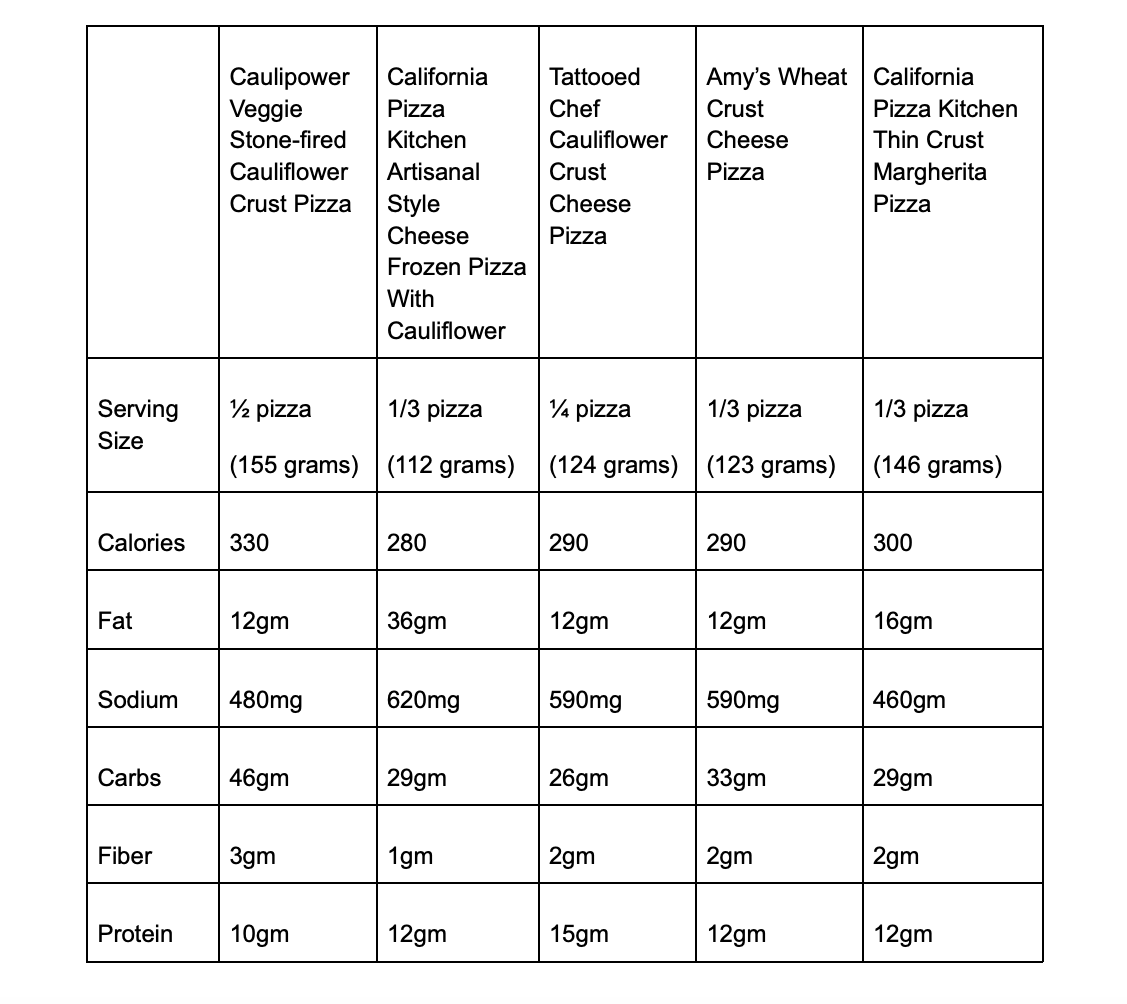Ever wonder if that cauliflower pizza crust is really that much healthier for you than a regular pizza crust?
Cauliflower seems to be everywhere and on every menu. It is being used as a substitute for many grains and legumes and you likely will find cauliflower rice, cauliflower mashed potatoes, and even cauliflower pizza crust. Why is this vegetable getting the starring role and replacing some of our favorite ingredients?
Cauliflower is a cruciferous vegetable that is rich in vitamin C, a good source of potassium, and provides antioxidants and phytonutrients that can protect against cancer.1 Consumer consumption of cauliflower has grown over the years, with the average US consumption of 1.2 pounds per year per person in 2012 up to 3 pounds per year in 2019.2 The rise in intake may be due to the fact that cauliflower has a neutral taste and texture that can absorb new flavors.
According to the USDA, a one cup serving contains only 27 calories, 0 grams of fat, and 5 grams of carbohydrates of which 2 grams are fiber. Approximately 17% of adults are on any type of special diet on any given day.3 Cauliflower is a great vegetable for those individuals trying to follow certain types of diets; gluten free, keto, low-carb, low-cal, or plant-based.
The pizza industry is a 45.7 billion dollar market; on any given day, 13% of Americans eat pizza.4,5 So, naturally with increased interest in eating a healthier diet, cauliflower was brought into this market. The first commercially available cauliflower pizza crust became available in 2017 and the market has been growing ever since. Your local pizza chain might have this option available too! While making your own cauliflower pizza crust is the healthiest way to go (you control the ingredients), store bought options are abundant, but the different nutrition labels might surprise you.
A Closer Look at Labels
Let’s compare a few different pizza crusts.

As you can see the nutrition facts can really differ based on the manufacturer of the pizza crust. To make the cauliflower crust, additional ingredients need to be added such as eggs, rice flour, cornstarch, cheese, olive oil, or others. The Caulipower brand and the Boboli thin crust have the same amount of calories and carb, while the thin crust has less fat and more protein. Reading food labels first will help you pick the right pizza crust for what you are trying to achieve with your eating habits.

Are Frozen Pizzas Any Different?
If you’re picking up a frozen pizza let’s take a look at those labels.

Once again, it really matters what you’re trying to achieve for your health. Just because it’s made from cauliflower doesn’t mean it will always be healthier for you. Thin and whole wheat crusts may also be good options as well when making a healthy choice. If you’re just trying to get more vegetables into your eating habits, try to add veggies as a topping on your pizza rather than meat or add in a side salad. Be on the lookout for the next pizza trend…..chickpea crust!
References:
1. Linus Pauling Institute. Cruciferous Vegetables. Available at: https://lpi.oregonstate.edu/mic/food-beverages/cruciferous-vegetables
2. US Department of Agriculture. Cauliflower’s Popularity Reemerges. Available at: https://www.ers.usda.gov/data-products/chart-gallery/gallery/chart-detail/?chartId=100252
3. Centers for Disease Control and Prevention. Special Diets Among Adults. Available at: https://www.cdc.gov/nchs/products/databriefs/db389.htm
4. US Department of Agriculture. What We Eat in America. Available at: https://www.ars.usda.gov/ARSUserFiles/80400530/pdf/DBrief/11_consumption_of_pizza_0710.pdf
5. PMQ Pizza Media. A State of the Industry Analysis 2019. Available at: https://www.pmq.com/the-2019-pizza-power-report-a-state-of-the-industry-analysis/





